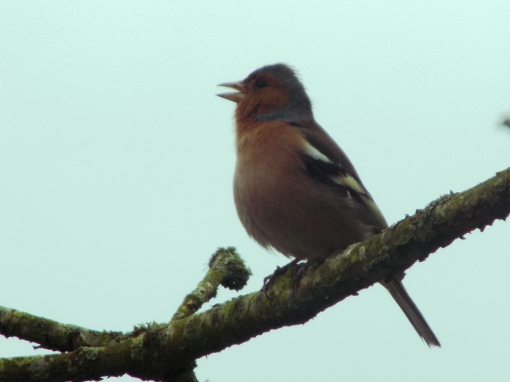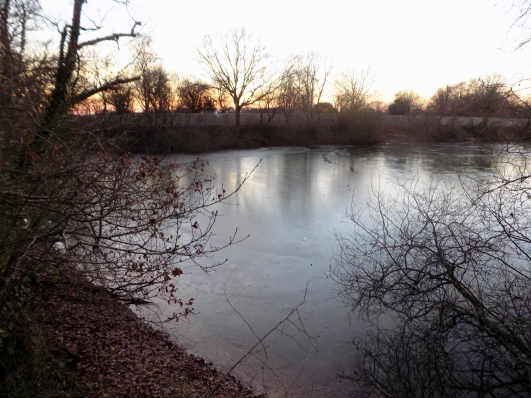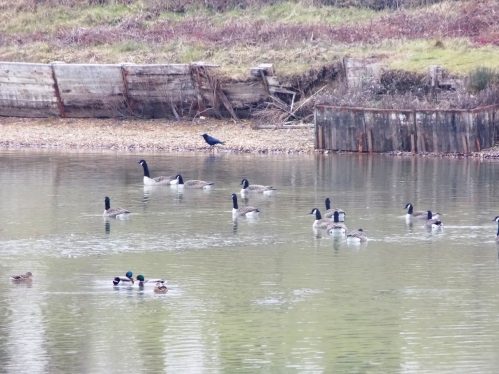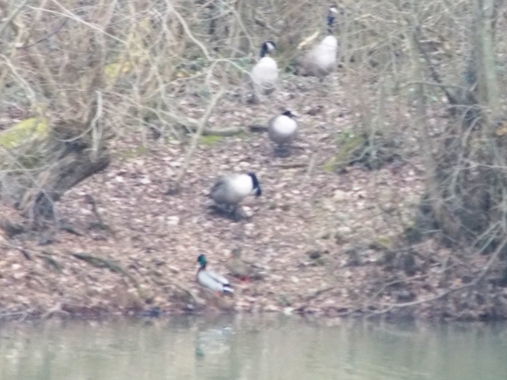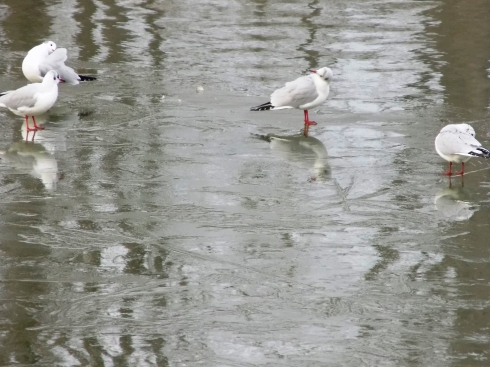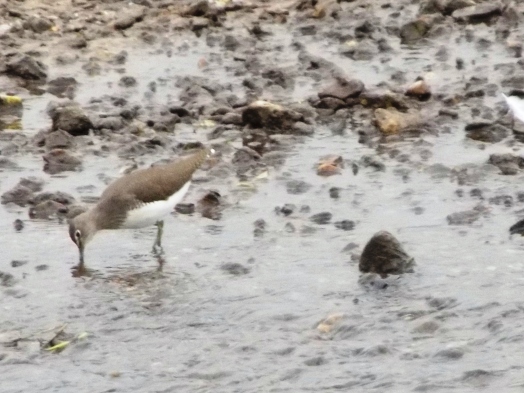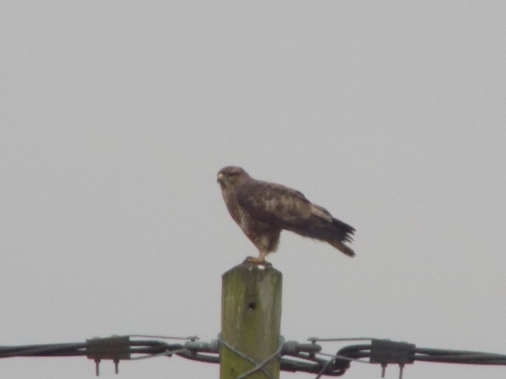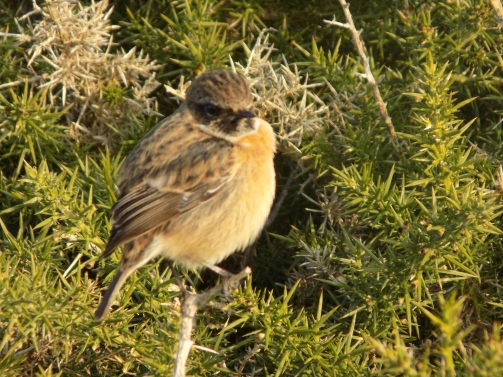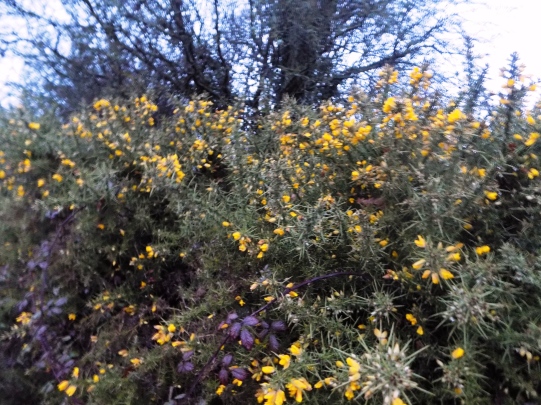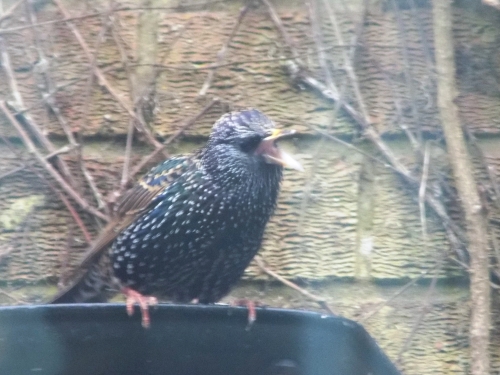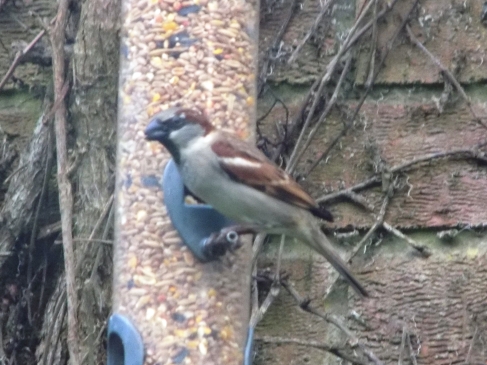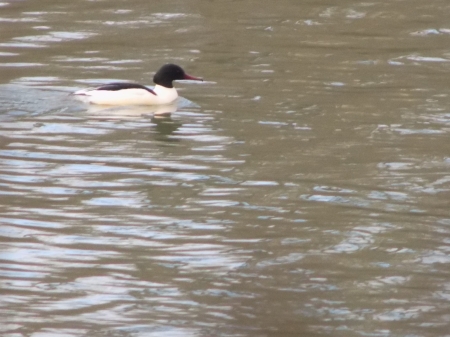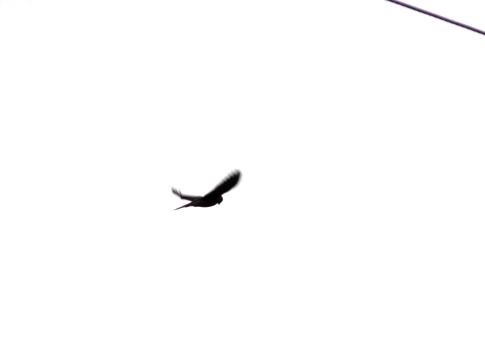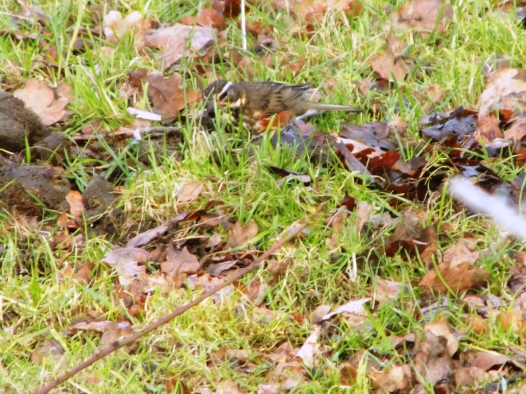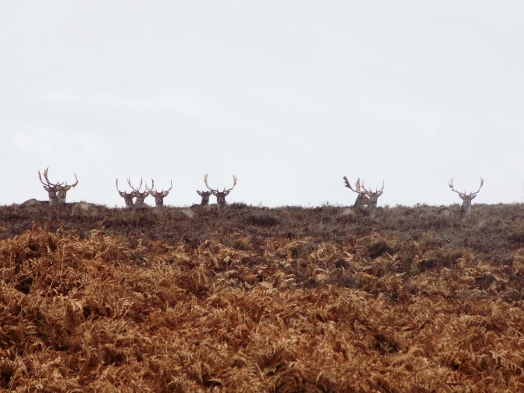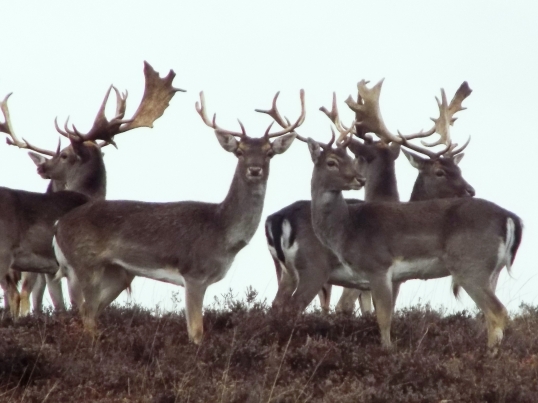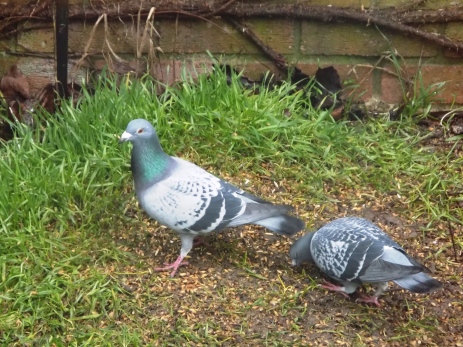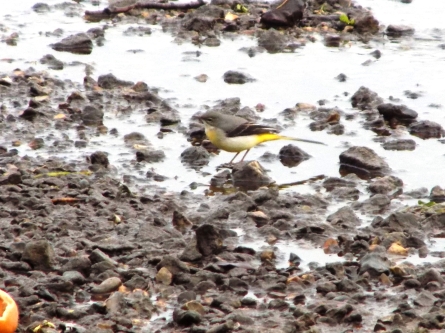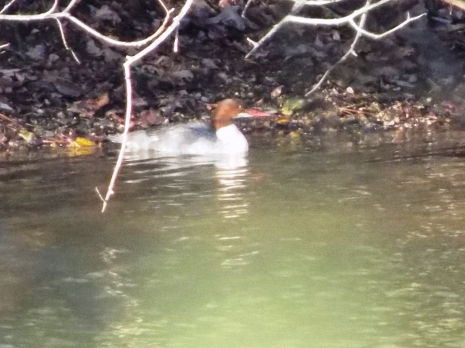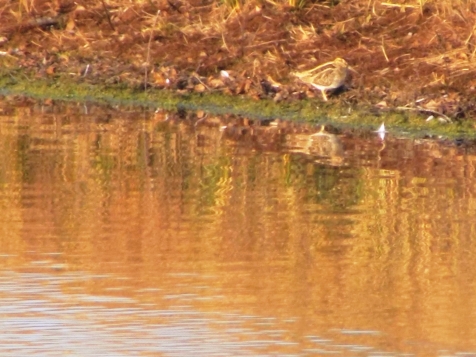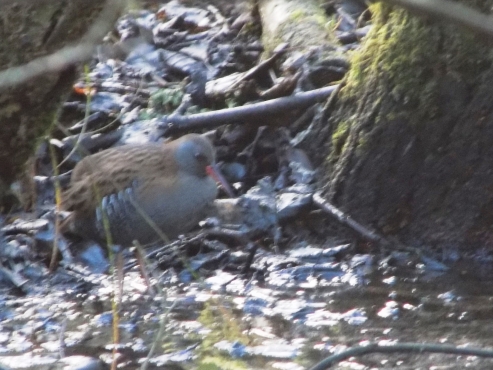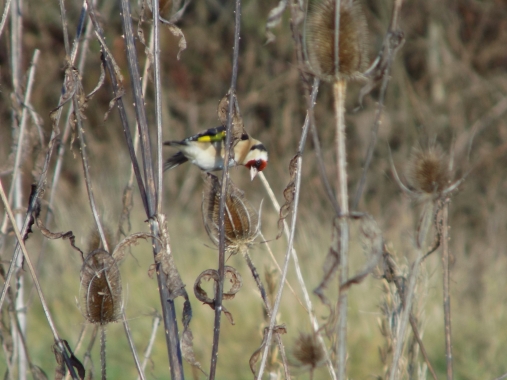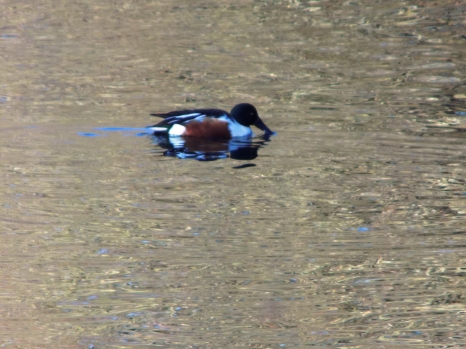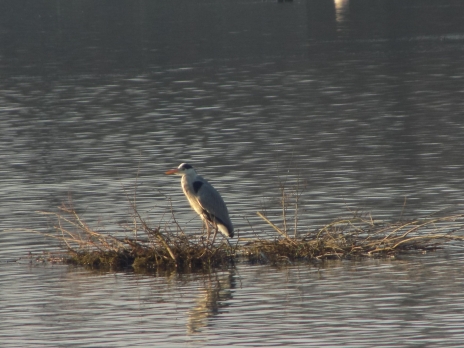The week began rather gloomily here with three days of thick fog smothering the area. I took a photo of the fishing lake to demonstrate:
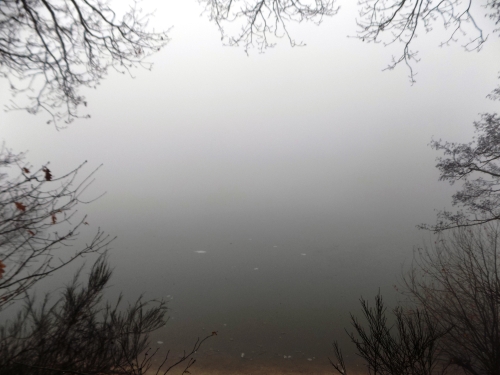
It has since cleared and the temperature has finally warmed up a little. An interesting new resident, or at least one I haven’t noticed before, is this canada goose.

As you can see, this individual has unusual plumage on its head. On canada geese the black on their necks continues over the top of the head and then connects to the beak over the eye. There’s a hint of black above the eye but otherwise this is a very white-headed goose. It’s possible that this is just temporary but if permanent it’s unusual. It’s possible that this individual may be the result of crossbreeding between different geese species or it could simply be natural variation.
The fantastic BBC programme Winterwatch has been on this week and one of the most interesting features was the amazing starling murmurations over at Studland Bay. Studland Bay is about a fifty kilometre drive from here in Ringwood but as the starling flies it’s only twenty-five kilometres (over Poole Harbour). The BTO’s ringing programme shows us the remarkable distance starlings can travel (see here) so it seems possible that the starlings I see in the garden could well be part of these huge murmurations 25 km away!
Here’s a video via YouTube of the Studland murmuration:
I had a lovely walk by the Avon today and got very close to this grey heron.

I’ve noticed lately that the herons seem to be found on the grass near the river rather than on the river shore. The river level remains very low in places, especially for winter, and I suspect that the herons are struggling to find much food in the shallow water, instead finding things in the grass. There is a lot of rain forecast for this week which might be good news for the herons.
There was also a little egret stood in the middle of the river today. It didn’t seem to interested in hunting though.
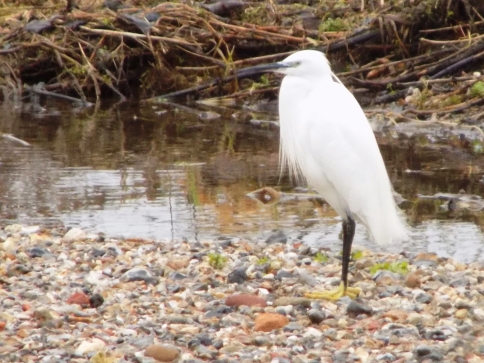
You can clearly see here how low the water level is. Usually at this time of year you wouldn’t even be able to see those stones through the water but at the moment they are really exposed.
I also got really clear views of one of the Avon roe deer family. I most often see does but today I saw this buck.

Roe deer have fairly weedy antlers compared to other British deer. It’s still fairly early in the year so it’s difficult to age this buck yet. It’s clearly at least two years old though as the antlers have a secondary branch. Roe deer antlers take around four months to grow so hopefully later in the year I’ll see a fully developed set.
I’ve noticed a few more signs of Spring this week- all over the area hazel trees are producing fresh catkins.
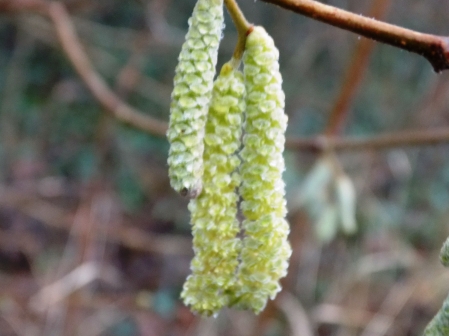
I even noticed some new fern growth on one of the old railway bridges. Being a bridge there are not trees to block out sunlight and the metal probably traps the heat, giving these plants strong conditions to grow even at this early stage of the year.

Finally, here’s a photo of a singing chaffinch that I was pleased with.
